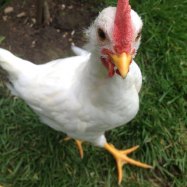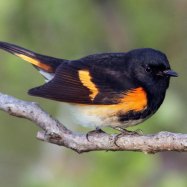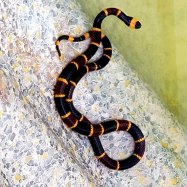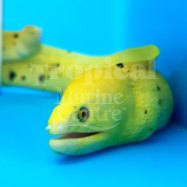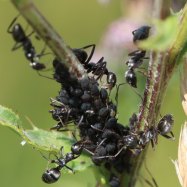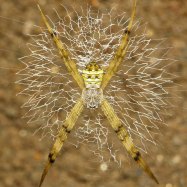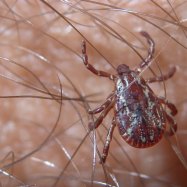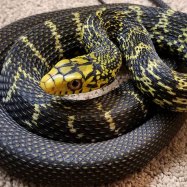
Japanese Squirrel
20 to 25 cm
The Japanese squirrel, known as risu, is a cute and agile creature found in Honshu, Shikoku, and Kyushu islands. With a small and slender body, this member of the Sciuridae family has a length of 20 to 25 cm. Keep an eye out for this adorable animal during your travels in Japan! #JapaneseSquirrel #JapanTravel #CuteWildlife
Animal Details Summary:
Common Name: Japanese Squirrel
Kingdom: Animalia
Habitat: Forests, woodlands, and parks
The Fascinating World of the Japanese Squirrel
Nature never ceases to amaze us with its diverse and magnificent creatures. Among them, the Japanese Squirrel stands out with its charming appearance and fascinating behavior. The Japanese Squirrel, known scientifically as Sciurus lis, is a small and slender mammal that belongs to the family Sciuridae. This adorable creature is commonly found in Japan, particularly in the Honshu, Shikoku, and Kyushu islands, making it endemic to the country Japanese Squirrel. In this article, we will explore the intriguing world of the Japanese Squirrel, from its physical appearance and habits to its natural habitat and geographical distribution.The Classification of the Japanese Squirrel
As with any other organism, the Japanese Squirrel has its place in the animal kingdom. It belongs to the Animalia kingdom, which encompasses all animals. Within this kingdom, the Japanese Squirrel falls under the Chordata phylum, a group that includes animals with a backbone. From there, it continues to be classified into the Mammalia class, which comprises mammals like us humans. The Japanese Squirrel then belongs to the order Rodentia, which includes animals such as mice, rats, and beavers. Finally, this adorable creature is part of the Sciuridae family, which includes squirrels, chipmunks, and marmots.The Natural Habitat of the Japanese Squirrel
The Japanese Squirrel is a versatile creature, making its home in various environments. It can be found in forests, woodlands, and parks throughout Japan Josephoartigasia Monesi. These squirrels prefer areas with plenty of trees, as they use branches and leaves for shelter and food. In addition, they are known to build their nests, or "dreys," in tree cavities, crevices, or even abandoned bird nests. These dreys are made of twigs, leaves, and moss and provide shelter from predators and harsh weather conditions.Feeding Behavior of the Japanese Squirrel
The Japanese Squirrel is a strict herbivore, which means it only consumes plant materials. These energetic squirrels primarily feed on nuts, seeds, and fruits, but they are known to supplement their diet with insects, eggs, and young birds when food is scarce. They have also been observed stealing seeds from bird feeders in parks and gardens. With their sharp incisors, they can easily crack open nuts and seeds, making them an essential part of seed dispersal in their habitat.Geographical Distribution and Country of Origin
As their name suggests, the Japanese Squirrel is native to Japan and is found exclusively in this country. It is believed that the squirrels arrived in Japan from Korea during the ice age and have since adapted and evolved to their current form. Today, they are mainly found in the three main islands of Japan, namely Honshu, Shikoku, and Kyushu. Due to their adaptable nature, the Japanese Squirrel can thrive in various conditions, making their presence widespread in these islands.Physical Appearance and Characteristics
The Japanese Squirrel is a small and slender animal, reaching an average length of 20 to 25 cm. Females are usually slightly smaller than males, and both sexes have a similar appearance. These squirrels are covered in soft, thick, grey-brown fur, with a distinct white underbelly. This coloration serves as excellent camouflage in their forest habitat, helping them avoid predators. In addition, they have large, black eyes and a long, bushy tail that they use for balance and communication.The Social Behavior of the Japanese Squirrel
Japanese Squirrels are highly social animals and live in small groups called "socio-territorial units." These units consist of a dominant male, one to four females, and their offspring. These squirrels communicate with each other through a series of vocalizations, including high-pitched chirps and trills. They also use their tails to communicate, such as flicking it to signal danger or fluffing it up to appear more massive when threatened.Squirrel Conservation Efforts in Japan
With their natural habitat under threat from increasing urbanization and deforestation, the Japanese Squirrel's population has been declining in recent years. As a result, conservation efforts have been put in place to protect this charming animal. In 2020, the Japanese government designated the Japanese Squirrel as a national species, highlighting the importance of protecting this endemic creature. Additionally, various organizations and NGOs are working towards preserving and restoring the Japanese Squirrel's natural habitats and raising awareness about their conservation.The Cultural Significance of the Japanese Squirrel
Apart from its ecological importance, the Japanese Squirrel also holds cultural significance in Japan. In traditional Japanese folklore, these playful creatures are portrayed as mischievous and clever, often playing tricks on humans. They are also considered a symbol of good luck, prosperity, and longevity, making them a popular subject in Japanese art and literature. Moreover, the Japanese Squirrel is often associated with autumn, as they can be seen busily collecting and storing food for the winter season during this time.The Japanese Squirrel and Humans
The Japanese Squirrel's charismatic charm has made it a popular animal among locals and tourists alike. In Japan, they are an essential part of the country's natural heritage and are highly protected. Many nature and wildlife photography enthusiasts flock to Japan to capture these adorable creatures in their natural habitat. In addition, the Japanese Squirrel has also been domesticated as a pet in some parts of the world, although it is illegal to do so in Japan.In Conclusion
The Japanese Squirrel is undoubtedly a remarkable and enchanting creature. Its unique physical appearance, social behavior, and cultural significance make it a fascinating animal to study and observe. As we continue to learn about this charismatic squirrel, it is crucial to protect and preserve its natural habitat to ensure its survival for generations to come. So, the next time you come across a Japanese Squirrel, take a moment to admire and appreciate the beauty of this extraordinary creature.

Japanese Squirrel
Animal Details Japanese Squirrel - Scientific Name: Sciurus lis
- Category: Animals J
- Scientific Name: Sciurus lis
- Common Name: Japanese Squirrel
- Kingdom: Animalia
- Phylum: Chordata
- Class: Mammalia
- Order: Rodentia
- Family: Sciuridae
- Habitat: Forests, woodlands, and parks
- Feeding Method: Herbivore
- Geographical Distribution: Japan
- Country of Origin: Japan
- Location: Mainly Honshu, Shikoku, and Kyushu islands
- Animal Coloration: Grey-brown fur with white underparts
- Body Shape: Small and slender
- Length: 20 to 25 cm

Japanese Squirrel
- Adult Size: Small
- Average Lifespan: 3 to 5 years
- Reproduction: Sexual
- Reproductive Behavior: Monogamous
- Sound or Call: Chattering
- Migration Pattern: Non-migratory
- Social Groups: Solitary or in small groups
- Behavior: Active during the day (diurnal), arboreal, and agile climbers
- Threats: Habitat loss, hunting
- Conservation Status: Least Concern
- Impact on Ecosystem: Seed dispersal
- Human Use: Not commonly used by humans
- Distinctive Features: Bushy tail, large eyes, and long whiskers
- Interesting Facts: Can leap up to 6 meters
- Predator: Birds of prey, snakes, cats
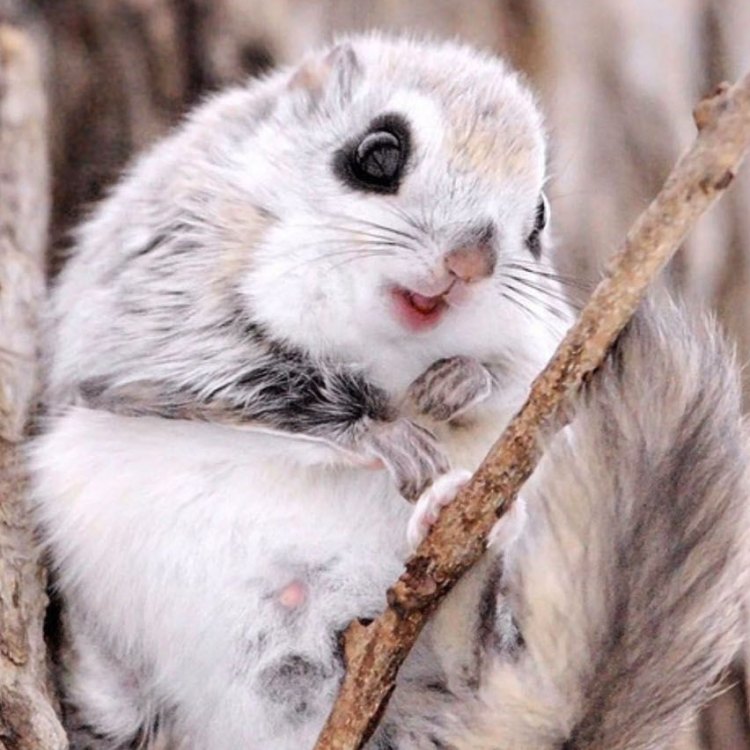
Sciurus lis
The Agile and Adorable Japanese Squirrel: A Fascinating Creature of the Forest
When one thinks of squirrels, the image of a small and bushy-tailed rodent quickly comes to mind. They are often seen scurrying around parks or gardens, gathering nuts and seeds, and dashing up trees with lightning speed. However, not all squirrels fit this stereotype. The Japanese squirrel, also known as the Japanese dwarf flying squirrel, is a unique and fascinating creature that breaks the mold of what we typically think of when we hear the word "squirrel PeaceOfAnimals.Com."The Japanese squirrel (Sciurus lis) is a species of squirrel endemic to Japan. It is native to the forests of Honshu, Kyushu, Shikoku, and some smaller islands in the southern part of the country. This small rodent is anything but ordinary, possessing distinct features and behaviors that set it apart from its more common squirrel cousins.
A Small Size with a Big Personality
One of the first things that stand out about the Japanese squirrel is its size. It is considered a small squirrel, with an average adult size of only 6-8 inches (15-20 cm) in length. This makes it about half the size of the North American grey squirrel, which most people are more familiar with. Despite its small size, the Japanese squirrel has a big personality. It is an active and curious creature, constantly on the move during the day (diurnal). Its agility and incredible climbing skills allow it to navigate through the branches of trees with ease Japanese Chin. It is also very social and can be found either solitarily or in small groups, depending on the availability of food and resources.A Monogamous Reproductive Behavior
When it comes to reproduction, the Japanese squirrel follows a monogamous mating system. This means that they mate and remain with the same partner throughout their lives. Breeding season occurs from January to June, with females giving birth to one to four young at a time. The young squirrels are born blind and helpless but develop quickly, reaching adulthood at around 6 months of age. The lifespan of the Japanese squirrel is relatively short, only 3 to 5 years in the wild.The Sound of Chattering
The Japanese squirrel is a vocal species, communicating with its characteristic chattering sound. This sound is produced by grinding their teeth together and is used for various reasons, such as signaling danger or communicating with other squirrels. It is also common for the Japanese squirrel to use its chattering sound during territorial disputes with other squirrels.Remaining Close to Home
Unlike some other species of squirrels, the Japanese squirrel does not have a migratory pattern. It remains in its home range and does not venture too far from where it was born. This is due to its dependence on specific types of trees for food and shelter. The Japanese squirrel is a herbivore, and its diet consists mainly of seeds, nuts, fruits, and leaves. It is a valuable component of the ecosystem as it aids in seed dispersal, contributing to the growth and diversity of the forest.A Solitary Lifestyle
While the Japanese squirrel can be found in small groups, it is generally a solitary creature. It prefers to live in its own territory, which it marks through urine and scent marking. This territorial behavior is especially prominent during breeding season, when male squirrels become highly aggressive in defending their territory and potential mates.The Threats and Conservation Status of the Japanese Squirrel
Like many other species of wildlife, the Japanese squirrel is facing threats to its survival. Habitat loss is a significant issue as forests are cleared for development, agriculture, and logging. This results in a decrease in the availability of suitable habitats for the squirrels, making it difficult for them to find food and shelter. They are also hunted for their meat and fur, though this is not as common as it used to be.However, despite these threats, the Japanese squirrel is currently listed as "Least Concern" on the IUCN Red List of Threatened species. This means that it is not considered endangered or in danger of extinction. This is likely due to the fact that the species has a broad distribution and can adapt to a variety of forested habitats. Also, there are currently no significant population declines observed, and the squirrel's slow reproductive rate makes it less vulnerable to fluctuations in population size.
The Relationship between Humans and Japanese Squirrels
Humans and Japanese squirrels do not have a close relationship. Unlike other species of squirrels, the Japanese squirrel is not commonly kept as a pet or used for any specific purpose by humans. In Japanese culture, however, the Japanese squirrel is seen as a symbol of luck, prosperity, and longevity. There are also stories and folklore that depict this creature as a messenger of the gods, carrying important messages between them and humans.Distinctive Features of the Japanese Squirrel
If you ever come across a Japanese squirrel, there are a few distinctive features that will help you identify it. One of the most noticeable features is its large, glimmering eyes, which give it a cute and endearing appearance. Its fur is also soft, with a predominantly grey color on its back and a cream color on its belly. But perhaps the most striking feature of the Japanese squirrel is its long, bushy tail. This tail serves as an essential tool for balance as the squirrel leaps and navigates through the treetops. It also provides warmth during the colder months and is sometimes used to communicate with other squirrels.Leap of Faith: Interesting Facts about the Japanese Squirrel
Aside from its distinctive features and behaviors, the Japanese squirrel has a few remarkable characteristics that make it even more fascinating. One of these is its ability to leap up to 6 meters from tree to tree. This impressive skill makes it a real "flying squirrel" – not literally flying, of course, but remarkable nonetheless. Its jumping ability also enables it to escape predators, which include birds of prey, snakes, and domestic cats.A Spectacular Addition to the Ecosystem
The Japanese squirrel may be small in size, but it plays a crucial role in the health and balance of its ecosystem. By dispersing seeds and aiding in the regeneration of forests, it contributes to the diversity and resilience of its habitat. Its presence also serves as an indicator of the overall health of the forest, making it a valuable species to monitor and protect.In conclusion, the Japanese squirrel is a unique and captivating species that deserves our attention and admiration. Its small size, big personality, and distinctive features make it a significant contribution to the ecosystem. We must continue to monitor and protect the natural habitats where they reside to ensure their continued presence in the forests of Japan. As we learn more about this fascinating creature, we gain a deeper understanding and appreciation for the delicate balance of nature and our role in preserving it.
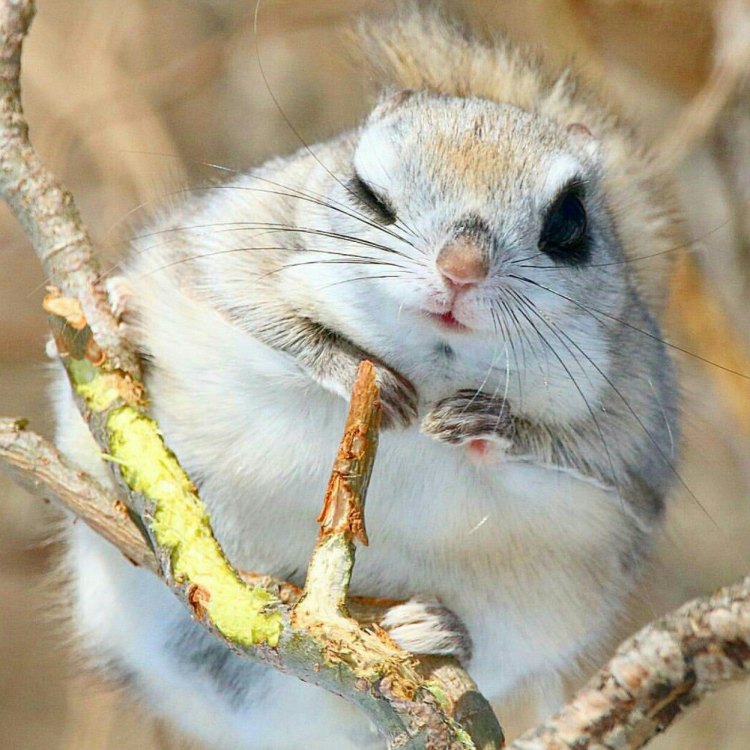
The Fascinating World of the Japanese Squirrel
Disclaimer: The content provided is for informational purposes only. We cannot guarantee the accuracy of the information on this page 100%. All information provided here may change without prior notice.



